At the end of 2007, just before Simon Gerrans swapped teams – from AG2R to Crédit Agricole – we reviewed a Look 595 bike just like he was riding for the first time. As part of our online #BikeGallery series, here is the a review published in January 2008.
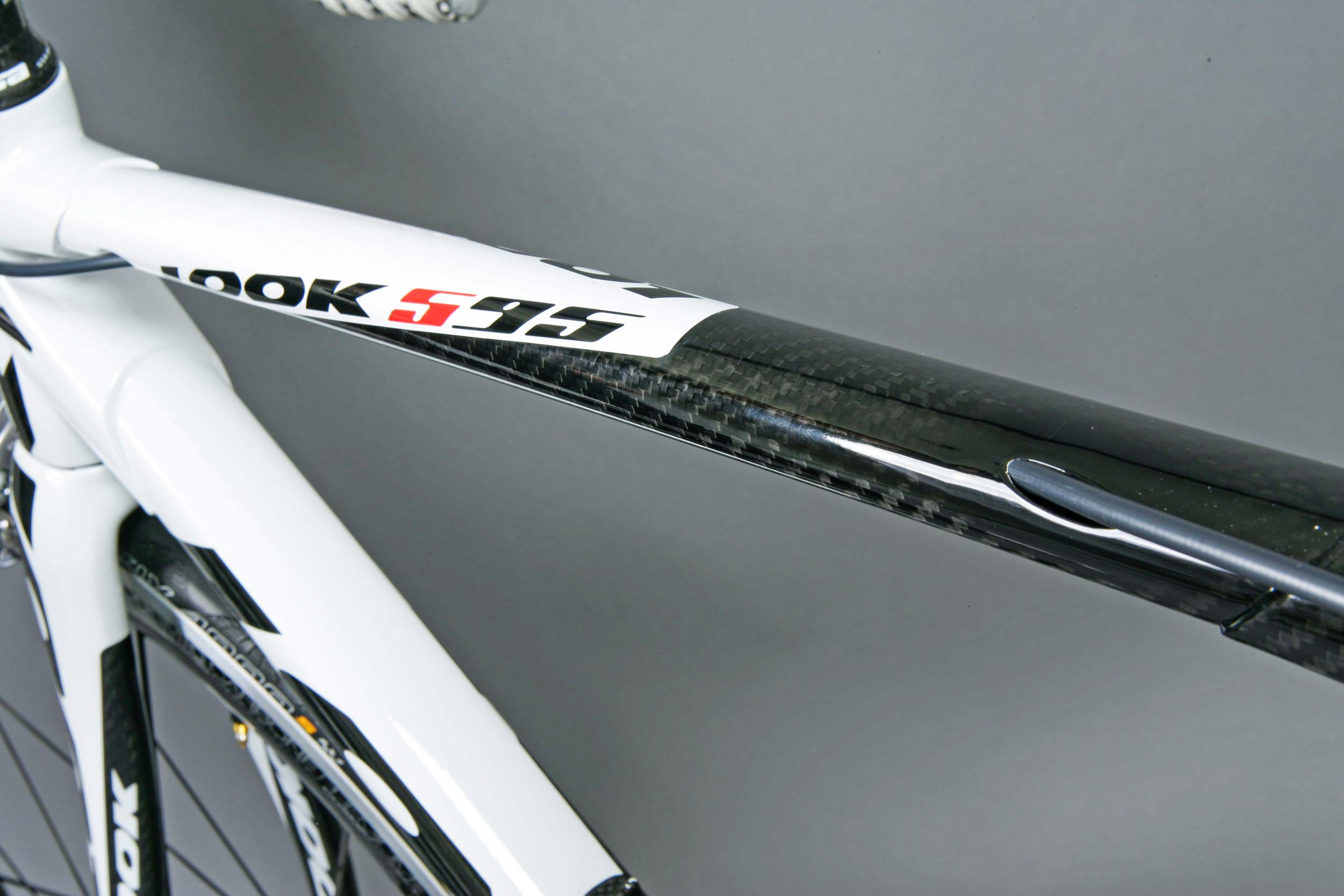
Wall thickness tapers from 1.2-0.8mm along the top tube. Look describes the 595’s tubing as “oversized”, but that’s relative to other lugged frames. Thanks to huge wraparound logos, the frame profile appears vast and muscular, especially under a 183cm, 81kg, sprinter like Thor Hushovd.
– Originally published in RIDE Cycling Review #39 (January 2008) –
Some interesting details for product spotters could be seen in the field of the Cronulla Criterium in December 2007. Simon Gerrans arrived equipped in a bipartisan manner. He raced with the AG2R team in 2007 but had a contract with Crédit Agricole for 2008; during this transitional part of the season, he was dressed in the clothing of the former employer with a helmet from the latter. His professionalism and loyalty to both teams were to be admired.
Mixing trade team clothing is a heinous cycling fashion crime. Exuberant novices are most guilty of this faux pas, but we forgive Simon. You see, it’s not about what he chose to wear but what he chose to ride that demonstrated impeccable taste.
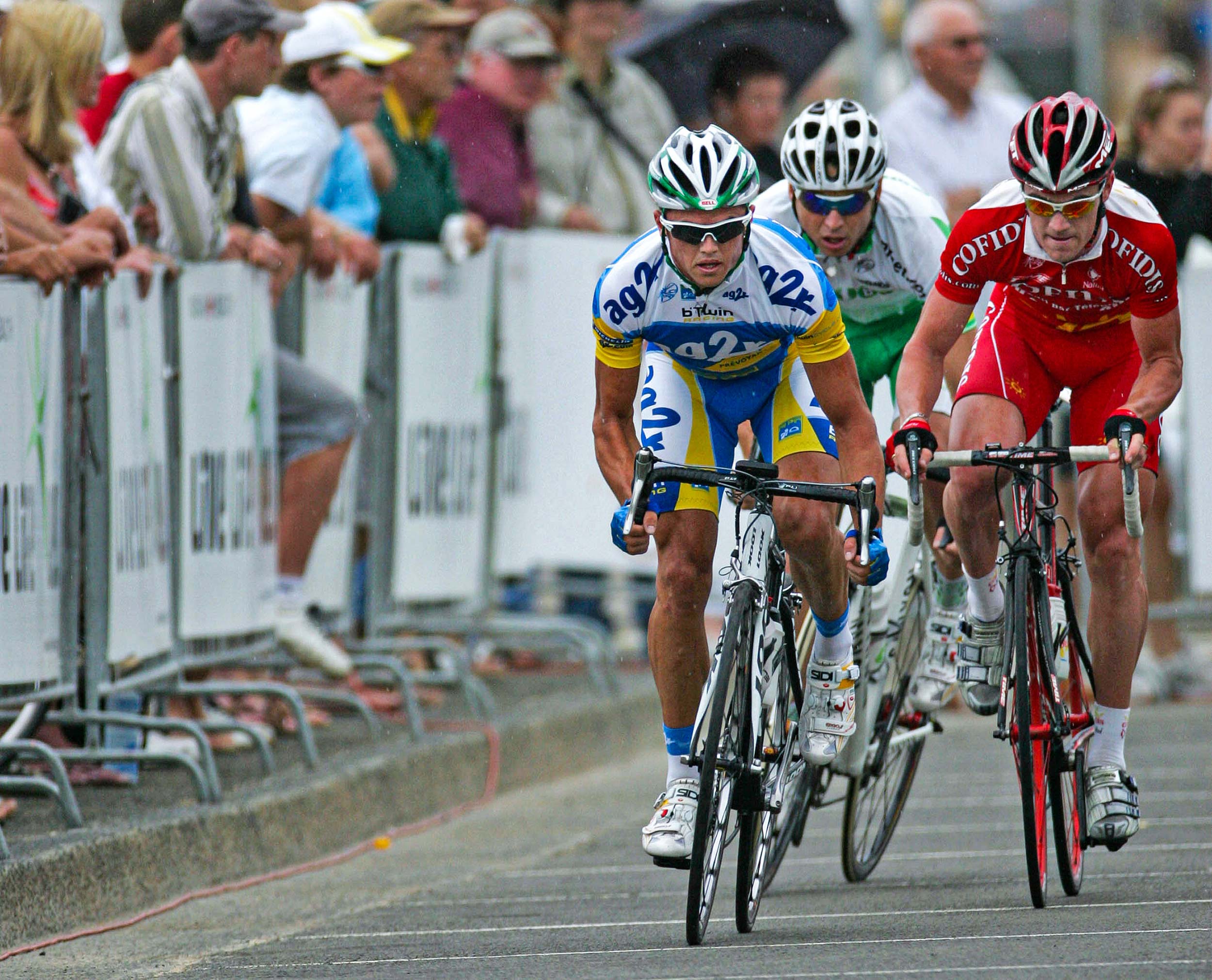
Simon Gerrans. Cronulla criterium, December 2007.
The Look 595 is a bike that fits in the luxury category. A machine not ridden if it’s wet outside.
This beauty is rested in a living room, certainly not relegated to a dirty garage. It will not be stacked hastily against another at the post-ride cafe stop.
It is also the bike that Crédit Agricole’s riders will relentlessly abuse day after day, rain or shine, in Classics and Grand Tours, over pavé and bitumen the duration of the 2008 season… and beyond. Admirers will praise its ability to do all these things, perhaps to the extent of purchasing one.
It will be bought, photographed, admired, pampered and, just maybe, ridden in anger.
Some bikes should be babied, but this isn’t one of them; Look has given the elegant 595 a resilient core.
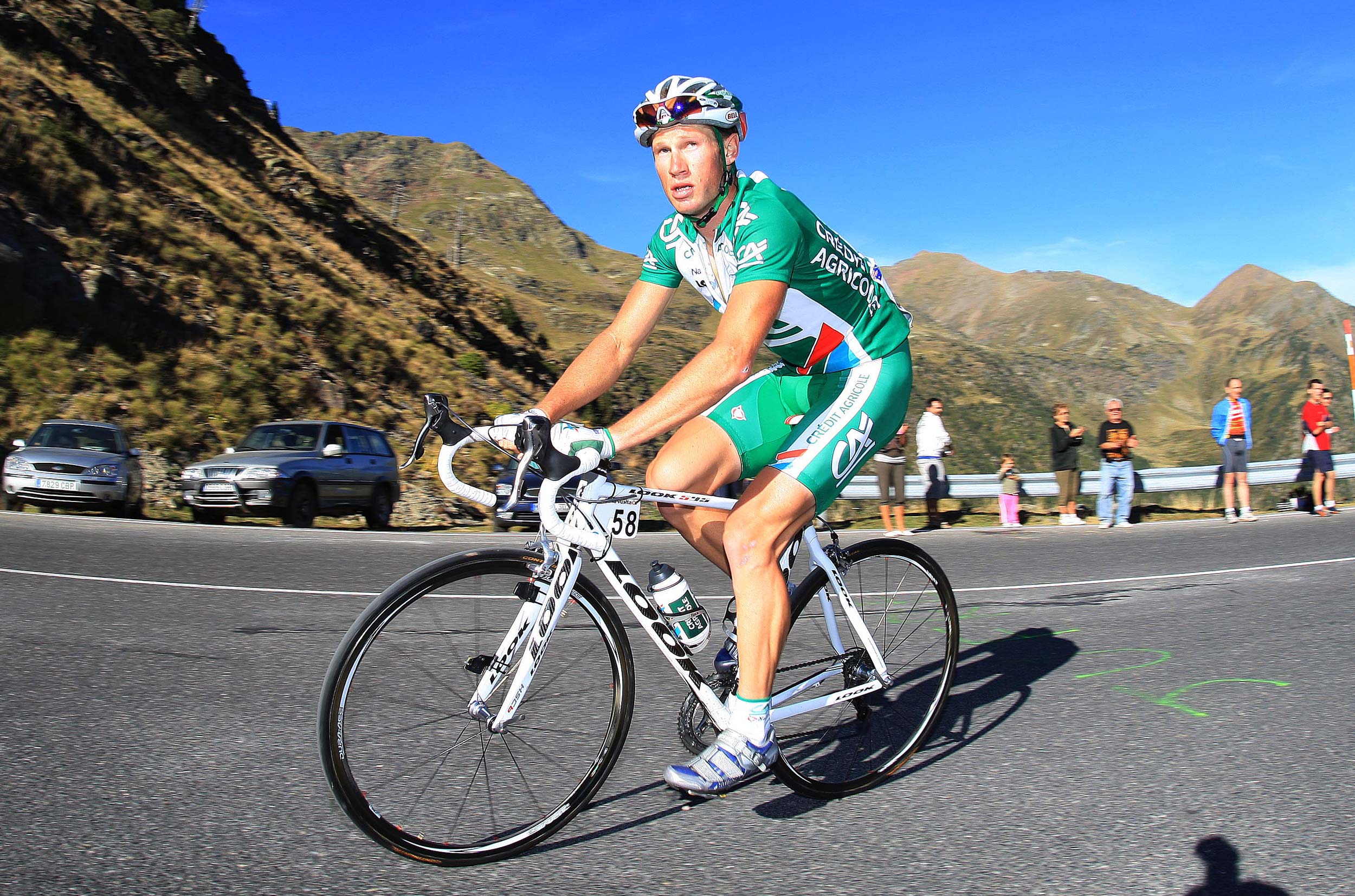
Mark Renshaw rode the entire 2007 season on the one Look 595 frame. The replacement he was due to collect prior to the Vuelta was incorrectly sized by his team mechanics. “Didn’t bother me,” he said, “I didn’t need a new one.”
Like Gerrans, Australian sprinter Mark Renshaw [was] another Crédit Agricole recruit [in 2008]. He already had a full season aboard Look’s hallmark racing frame. When asked for his impressions of the bike, he nonchalantly described a tough season of racing.
“I got my first 595 last January, just before the Tour Down Under. I could tell straight away that it was a great bike. I’d only had it a few days before I won the Down Under Classic, my first race on it. It’s great for sprinting, with a rigid frame that doesn’t offer any surprises. I was in control right from the start.
“Usually I go through a few frames in a season. That’s how it normally is in the pro ranks. The guys who race the Tour get a new bike in July but that didn’t apply for me. I had to wait until September, and I was given a new bike just before the Vuelta.
“A team mechanic told me, ‘Right, all your measurements have been applied. Here’s a new bike.’
“But they made a mistake and it didn’t fit me properly.
“It didn’t bother me; I liked my original anyway and it was showing no sign of fatigue. I raced that same frame all year – from the Tour Down Under, to the Vuelta and end of season races.”
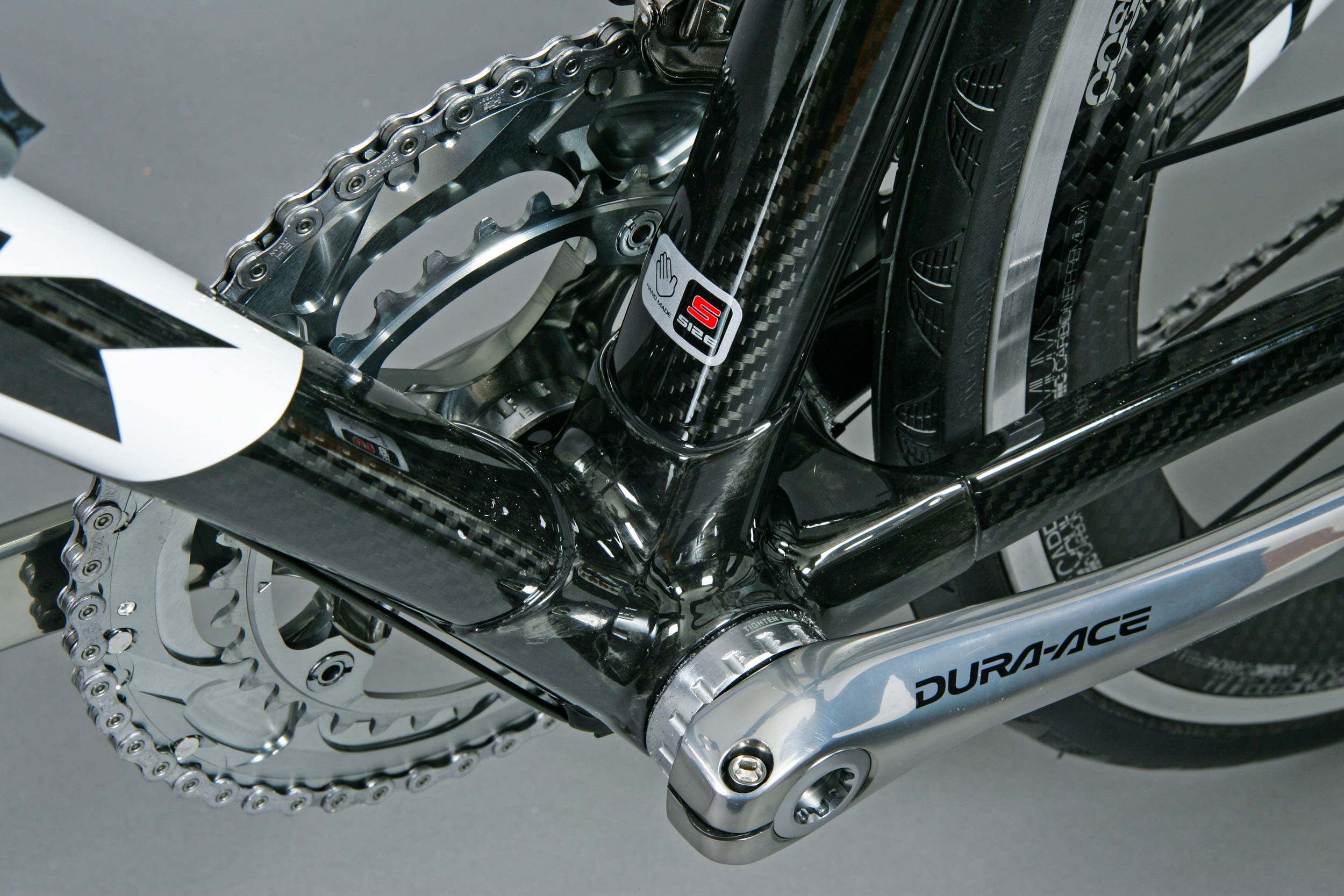
During moulding the carbon layers of the bottom bracket lug are compressed to around 250 bar. Lean in appearance, Look hides extra girth rather well. An oblong downtube almost matches the width of the 130 gram bottom bracket shell. Chainstays are marginally asymmetrical.
It is not commonplace for a one-kilogram frame to survive the rigours of an entire pro season. Most frames will be retired or sold at year end, but Renshaw still trains on his original 595 today.
Dwarfed by deep-section Mavic Cosmic Carbone wheels, the slim tubing looks delicate and sounds light when tapped. Anchoring these waifish cylinders are three major lug sections. This is where Look crams in plenty of technology and time resources.
Ultimately composite frames, in one form or another, are assembled from individual tubes or larger sub-sections. Tubes are either fused together during the final stages of production or inserted into lugs and bonded. Look creates both ‘monobloc’ (555 and 586) and lugged (585 and 595) frames.
By remaining open-minded to different construction methods, the French company increases its knowledge base and satisfies most tastes. All Look road frames have a five-year warranty period, regardless of how they are made.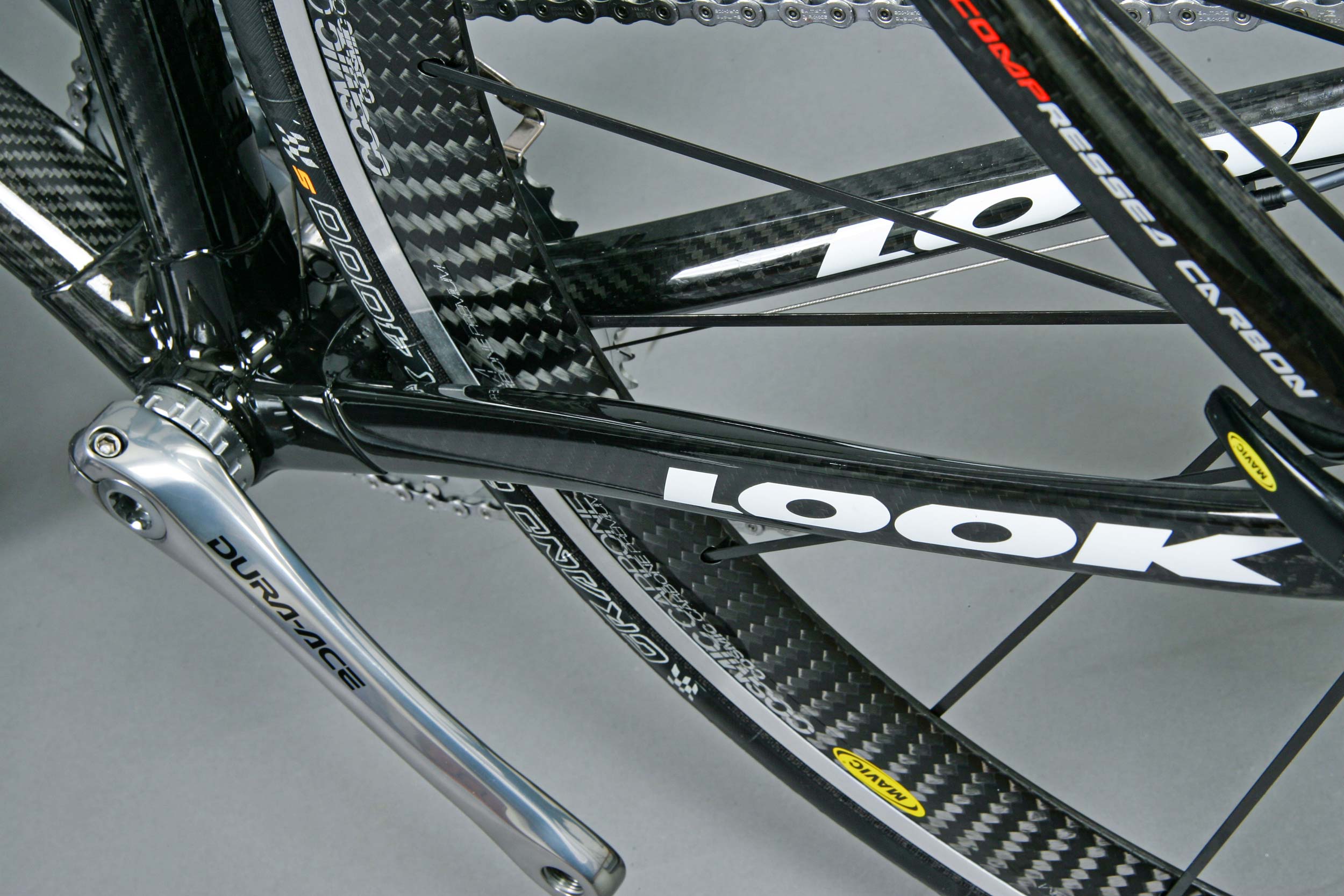 Word association is a likely cause of trepidation towards the conventional appearance. Lugs are more commonly associated with steel. We remember steel bikes as heavy, flexy and old-fashioned.
Word association is a likely cause of trepidation towards the conventional appearance. Lugs are more commonly associated with steel. We remember steel bikes as heavy, flexy and old-fashioned.
Knowing the two major benefits of oversized tubing – stiffness and a low weight – could still be achieved with techniques honed over 20 years, Look proudly incorporates lugs into its carbon designs. Like French rival Time, it has persevered whilst other trends have come and gone…

Look’s elastomer-based post is only available in one size. The proximity of this buffer to the saddle provides superb comfort. Can you now have a race bike and ride it, too?
Look isn’t the first company to extend the seat tube well beyond the top tube to create an integrated seatpost. This honour is claimed by some and disputed by many.
The first generation created a minor travel annoyance for owners of hard-case bicycle luggage. Manufacturers like Sci-Con have since engineered cases specifically for the taller profile.
The E-post is, however, unique with its fusion of adjustments and materials.
A single titanium bolt expands two elastomers that wrap around the seatpost body, wedging the post into the frame. The third and largest elastomer (the red horizontal stripe visible on the post) acts as a cushion between the seat tube and post. Three elastomer types come with the frame for personalised comfort setting.
There is 30mm of fore-aft cradle adjustment available even before the Fi’zi:k’s rails are shunted into position. It’s obvious but, not being round, the seat post will always remain straight!
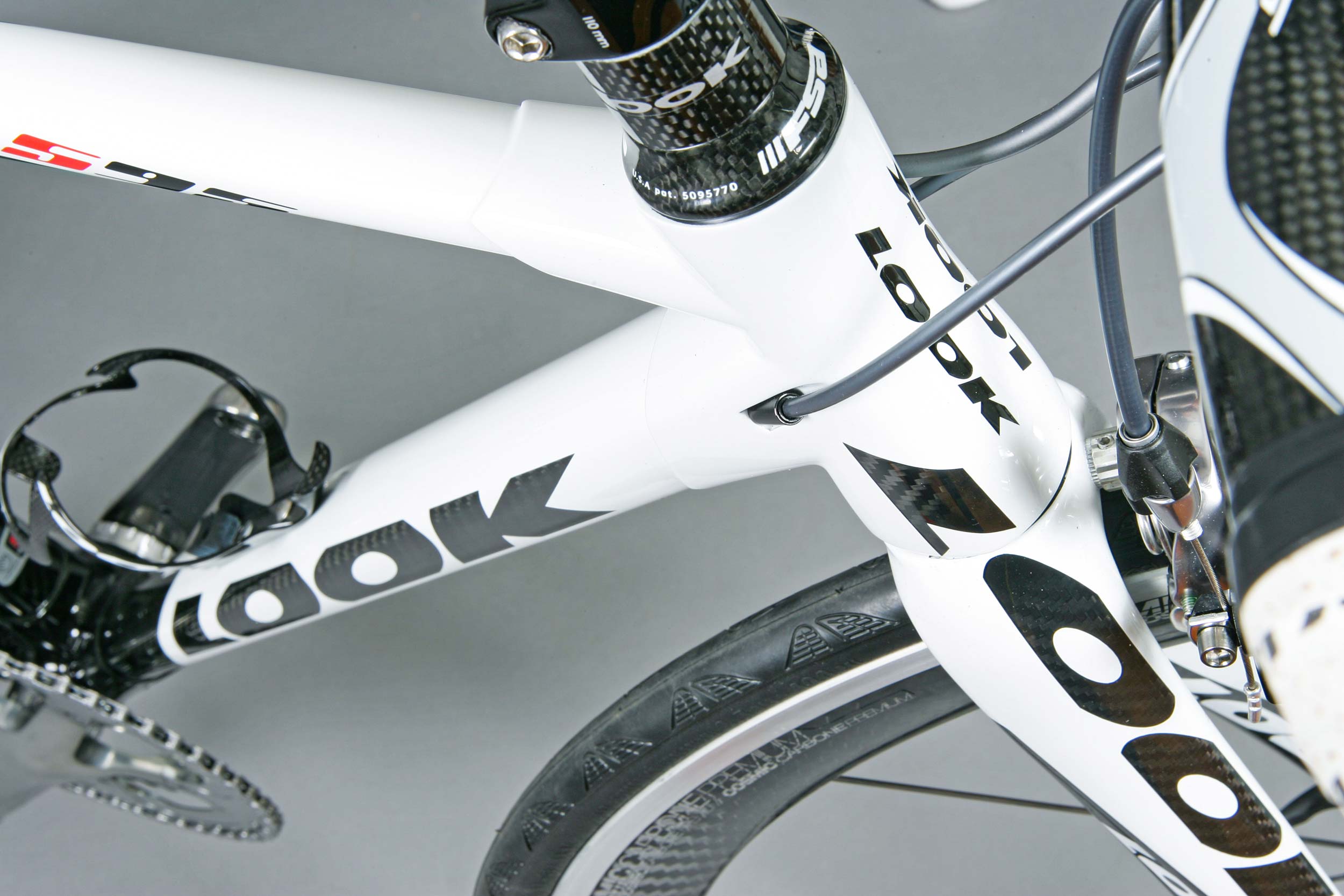
Placement of insertion points for cable routing is neat and maximises shifting performance. Workshop swearing jars will be largely untouched due to Look’s inclusion of full-length internal guides.
The 595 looks superb – black and white always work for me – although replacing the wheels with another set would not suddenly make it less appealing. Campagnolo or SRAM groupsets could be used on the frame and it would still be alluring.
Gerrans is well positioned to offer comments on the specification of this review bike. Amongst the many equipment changes for him this year is a return to Shimano, which produces the Dura-Ace groupset and Pro integrated bar/stem combination.
“My first real impression is the ensemble change,” said Gerrans after only a few days on the CA team-issue 595.
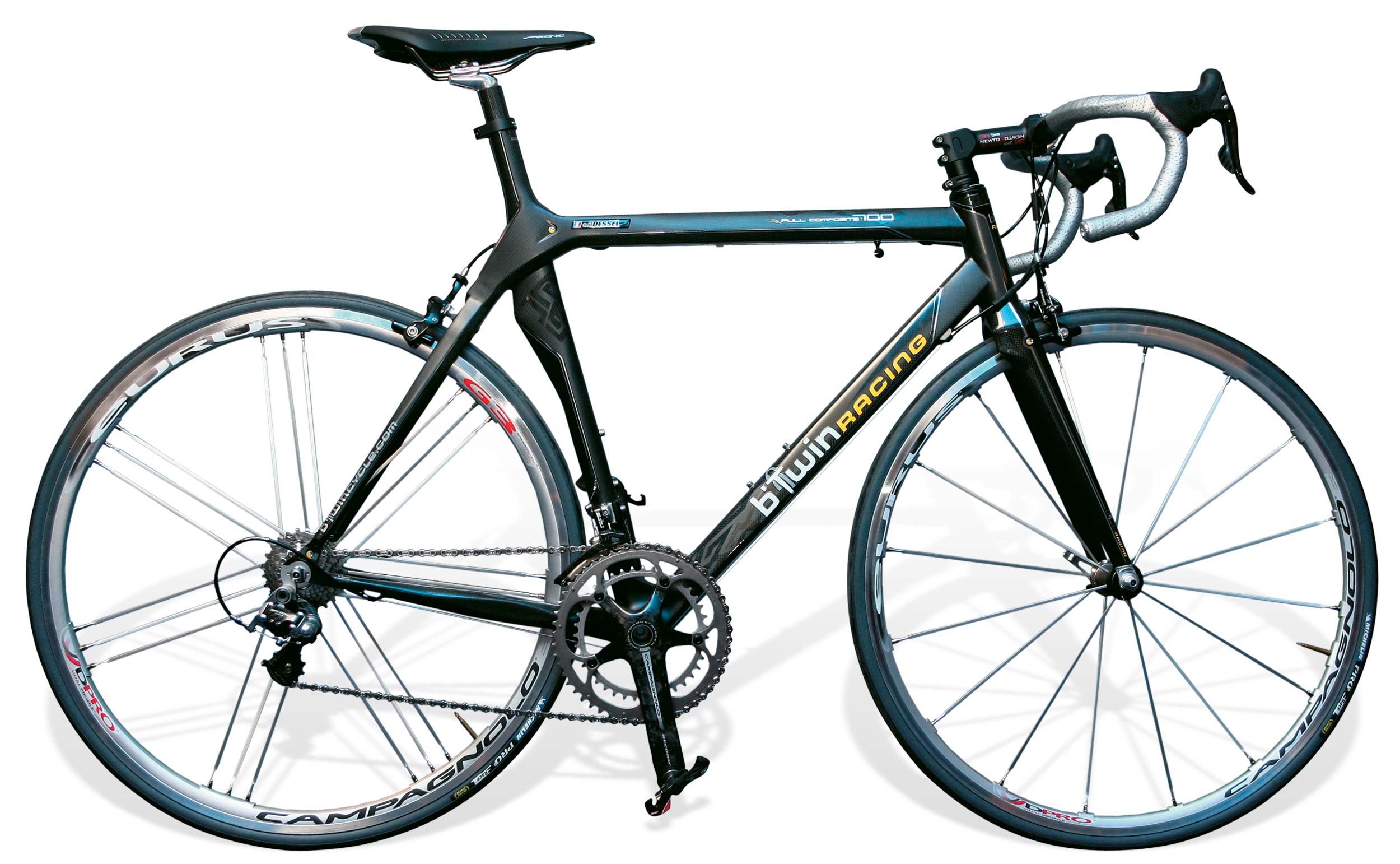
In 2007, when Gerrans raced with AG2R for the third season, the team raced ‘B-Twin’ bikes (above). With a Campagnolo Record groupset.
“This is my first time on Shimano for a few years and it takes a little while to adjust to the significant changes.
“It’s all very different. The shift mechanism, the pedal/cleat system, the look of it… but the thing that stands out most is the shape of the levers! That takes a while to get used to again.
“It was all rather bizarre to start with but it felt quite comfy. The round bars are really popular with the pros despite all the ergo bends available.
“I like having the flat section at the base of the bars because when I’m doing a lot of work in the wind – swapping off at the front or in a breakaway – I like to have my hands in the flats at the bottom. And it looks cooler. They’re old school…”
The rider appears to be enjoying the familiarisation period of 595 ownership.
Having ridden a very similar bike for four months myself, I was eager to discover more of what Gerrans thought about his new toy. We compared notes soon after his arrival in Sydney, days before his appearance at the International Cronulla Criterium.
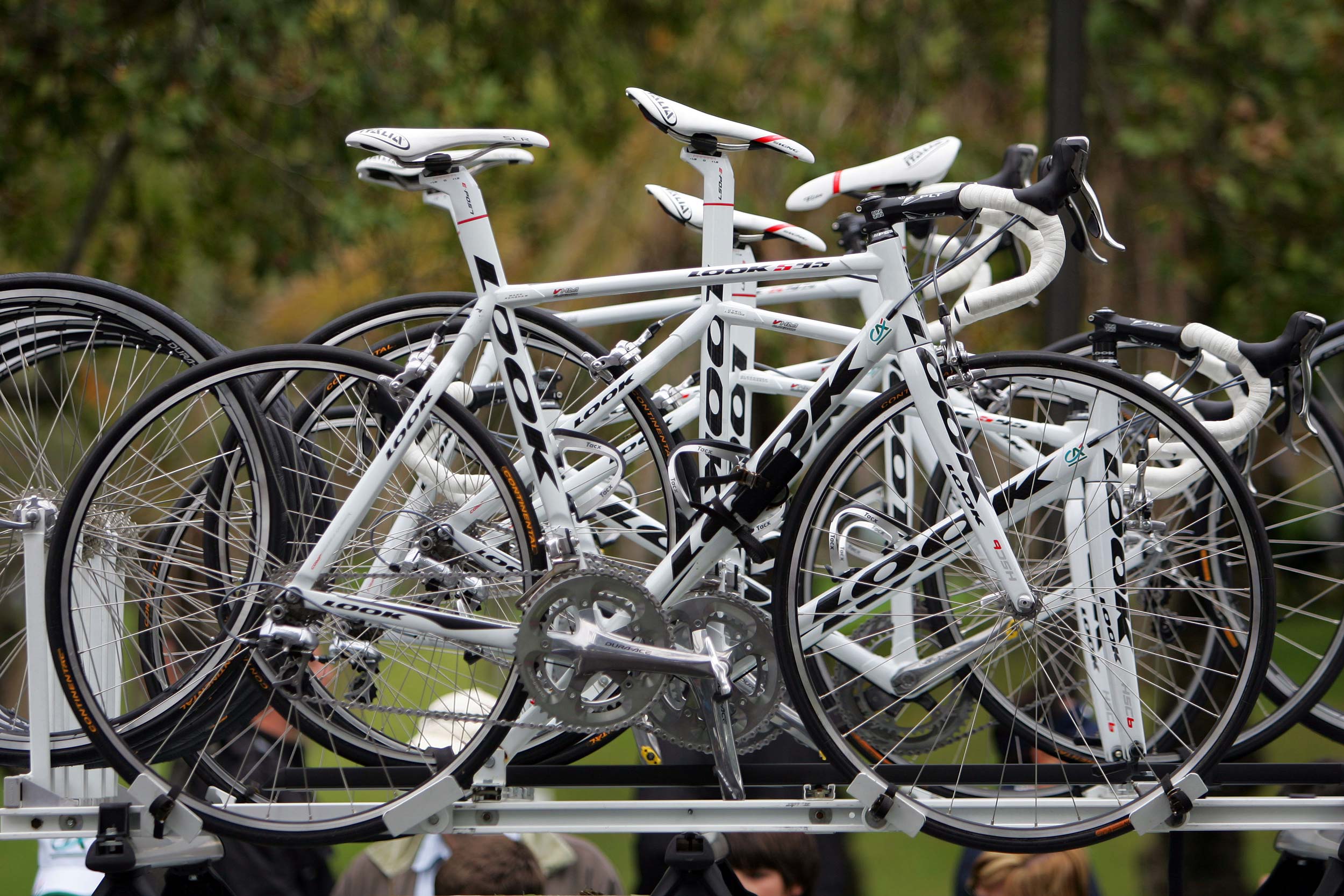
Crédit Agricole’s all white colour scheme from 2007 changed for 2008.
Simon Gerrans Q&A
RIDE Media: When you change teams, how do you ensure you get the exact fit you want from a new bike supplier?
Simon Gerrans: “At the Eneco Tour in August 2007, I was staying in the same hotel as Crédit Agricole. I’d already signed a contract with the team for this year. I arranged for one of the mechanics to borrow the bike I’d been using at AG2R for a few hours.
“He took all the measurements and sent that off to Look.
“Clearly those involved knew exactly what they were doing; the first time I threw my leg over the 595, it was right to go. I had nothing to do with it.”

Gerrans won a stage of Criterium International early in his first season with Crédit Agricole. (Photo: Graham Watson)
RIDE Media: You look very comfortable on the small sized Look frame. Can you tell us what your measurements are?
Simon Gerrans: “I have my complete details written down, but here is a rough idea of the things I pay attention to. From bottom bracket to the top of the saddle, I measure 72.5cm.
“Lengthwise, I had 53cm from the tip of my seat to the centre of the bars when I was using Campagnolo and another seat. It’s actually less now because the tip of my new saddle isn’t so long.
“Shimano’s STI hoods are a lot further forward than the Ergolevers I’ve been using for three years. I adjusted the length of my stem, making it shorter to allow for the difference of the two systems.
“The measurement for how far behind the bottom bracket the saddle is depends on the brand.
“With the set-up on the Look, using a Selle Italia, the tip is 6.5cm behind the centre of the crank axle.
“I have an 11cm seat to handlebar drop (from the height of the saddle), 42cm round bend bars and 172.5mm cranks on time trial and road bikes.” RIDE Media: How about first ride impressions of the new bike?
RIDE Media: How about first ride impressions of the new bike?
Simon Gerrans: “One of the first things to stand out is how well it handles.
“Even in straightforward early-season training rides it feels really good. I haven’t done a lot of aggressive climbing or sprinting apart from a few short bursts, so I can’t really offer any feedback on how it feels in race circumstances yet.”
RIDE Media: The deep section Mavic wheels synchronise well with the 595. On other carbon frames they add rigidity which can translate to a certain degree of harshness. Have you had a similar experience?
Simon Gerrans: “My first few rides were with a set of deep-dish Shimano wheels and they felt fantastic on this bike. They rolled really well and the whole package felt really responsive.
“Accelerating felt good and the bike seemed stiff. I feel like I’ve got the right combination between stiffness, handling and comfort.
“I’m a firm believer in using training wheels, and the heavier the better. It makes you work harder. The surprise sensation on race day is more tangible when a set of lightweight, high-end carbon beauties are fitted… you feel like you’re flying!”
RIDE Media: Last year we reviewed the 585, which didn’t have the integrated seatpost. Do you benefit from this configuration or is it just a perceived difference?
Simon Gerrans: “The Decathlon frames I rode at AG2R had an integrated seatpost, but only to a point. There was an extended seat tube and a small Campagnolo seat pillar inside of that. The seat itself wasn’t attached to the frame like it is on the Look.
“I wouldn’t say that I notice any more feedback from the road. In my opinion, with the integrated post the ride is a little more plush.”
RIDE Media: Some readers will buy a new bike this year. What is most important to you when you get a new bike?
Simon Gerrans: “The first thing on my check list is handling. A low weight is what is immediately apparent but I don’t think that’s the be-all and end-all of a bike. I think it’s much more important that it handles well.”
– See more from the #BikeGallery series: follow us on Instagram @ridemediaHQ –


